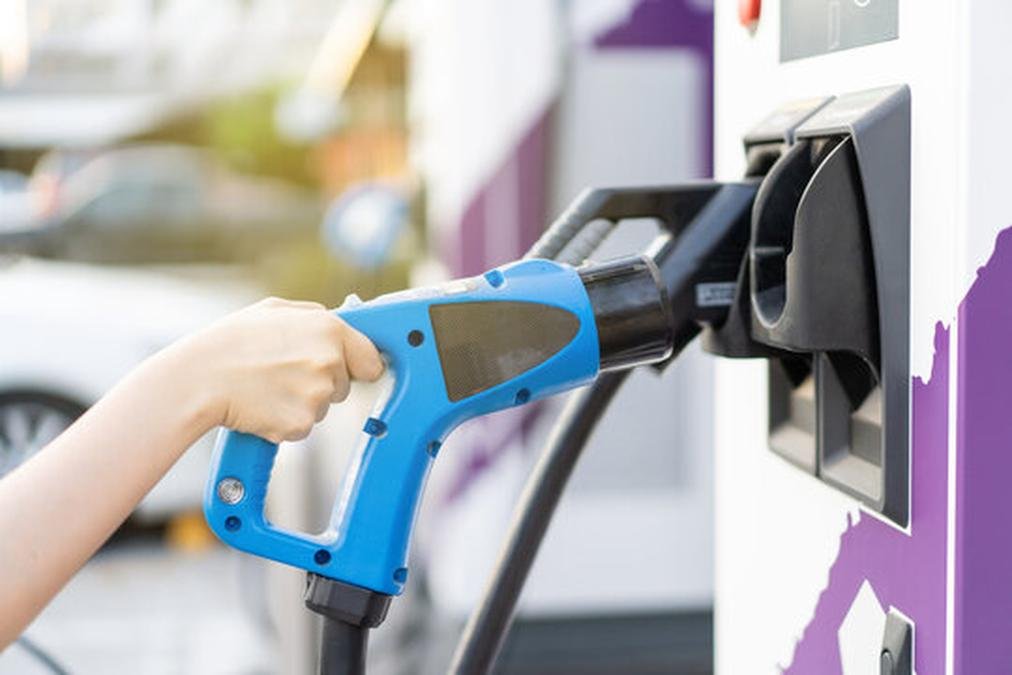Physical Address
304 North Cardinal St.
Dorchester Center, MA 02124
Physical Address
304 North Cardinal St.
Dorchester Center, MA 02124

Discover the truth about Ethereum blockchain gas fees and how to reduce costs. Learn the impact of gas fees on the Ethereum network and users. Read more now!
Gas fees are an essential part of using the Ethereum blockchain. They are paid to miners in exchange for executing transactions and smart contracts on the network. As explained by Investopedia, gas fees are the fees required to conduct a transaction or execute a contract on the Ethereum blockchain platform.
According to Ethereum.org, gas fees are the fees paid in Ether that measure the computational effort required to execute specific operations on the Ethereum network. The London Upgrade introduced variable-sized blocks to Ethereum, and each block has a target size of 15 million gas, with a maximum limit of 30 million gas. Gas fees help keep the Ethereum network secure by preventing bad actors from spamming the network.
To execute a transaction or smart contract on the Ethereum network, users must pay a certain amount of gas fees. The amount of gas required for a transaction can vary depending on the complexity of the transaction, and miners will charge a fee for their services. As stated by OriginStamp, gas fees are paid in ETH and the amount charged by miners can vary depending on network demand.
Gas fees play a crucial role in securing the Ethereum network, preventing spamming, and incentivizing miners to validate transactions. As explained by Investopedia, validators receive gas fees for the resources needed to conduct transactions.
However, high gas fees can have a significant impact on Ethereum users, particularly those making smaller transactions. The impact of gas fees on the scalability of Ethereum is also a concern. As stated by Ethereum.org, initiatives like layer 2 scaling aim to improve gas costs and scalability. It is important to note that gas fees are not unique to Ethereum, and other blockchain platforms also charge fees for their services.
In the next section, we will dive deeper into how gas fees work on the Ethereum blockchain and explore the factors that affect them.

Gas fees are an essential part of the Ethereum blockchain and are used to pay miners for their work. In this section, we will explore the mechanics of gas fees and how to calculate them.
As previously mentioned, gas fees are the fees paid in Ether to execute transactions and smart contracts on the Ethereum network. According to Ethereum.org, gas is a fee that measures the computational effort required to execute specific operations on the Ethereum network.
When a user initiates a transaction or smart contract on the Ethereum network, they must pay a certain amount of gas fees. Gas fees are used to incentivize miners to validate transactions and execute smart contracts. As stated by Investopedia, validators receive a gas fee for the resources needed to conduct transactions.
Gas fees are not fixed and can vary depending on several factors. The following are some of the factors that can affect gas fees:
According to Ethereum.org, gas fees are determined by supply and demand. If the demand for transactions on the network is high, gas fees will increase. Conversely, if the demand is low, gas fees will decrease.
The Ethereum network has a target block size of 15 million gas, with a maximum limit of 30 million gas. If a user initiates a transaction that exceeds the maximum gas limit, it will be rejected. As explained by Ethereum.org, the network capacity can affect gas fees, particularly during periods of high network congestion.
The gas required for a transaction can vary depending on its complexity. For example, a transaction that involves executing a smart contract with many conditions will require more gas than a simple transaction. As stated by Investopedia, the more gas required for a transaction, the higher the gas fee.
To calculate the gas fees for a transaction, users must consider the gas limit and gas price.
The gas limit is the maximum amount of work a validator will do on a particular transaction. If a transaction exceeds the gas limit, it will be rejected. According to Ethereum.org, users can set the gas limit for their transactions.
The gas price is the price per unit of work done by the validator. As explained by Investopedia, the gas price is determined by the market and can vary depending on supply and demand.
The transaction cost is the gas limit multiplied by the gas price. This is the total amount of gas fees that a user must pay for a transaction.
In the next section, we will explore the importance of gas fees for securing the Ethereum network and their impact on Ethereum users.

Gas fees play an essential role in securing the Ethereum network and incentivizing miners to validate transactions. However, high gas fees can have a significant impact on Ethereum users, particularly those making smaller transactions. In this section, we will explore the importance of gas fees for the Ethereum network and their impact on users.
As mentioned earlier, gas fees help prevent bad actors from spamming the Ethereum network. According to Ethereum.org, gas fees incentivize miners to validate transactions and execute smart contracts. Validators receive a gas fee for the resources needed to conduct transactions. This process ensures that the Ethereum network remains secure and reliable.
High gas fees can have a significant impact on Ethereum users, particularly those making smaller transactions. As stated by Investopedia, the transaction cost is the gas limit multiplied by the gas price. If the gas limit or price is high, the transaction cost will be high as well.
For example, if a user wants to purchase a $50 NFT, they may have to pay $100 or more in gas fees. This issue is particularly severe for small transactions. As YCharts indicates, the average gas price for Ethereum was 44.42 as of August 2021, down from 51.48 the previous day. However, this is still a high gas price for many users.
There are several ways to reduce gas fees on the Ethereum network. The following are some tips that can help users reduce gas fees:
As previously mentioned, initiatives like layer 2 scaling aim to improve gas costs and scalability on the Ethereum network. Layer 2 scaling solutions can help reduce gas fees and improve the speed of transactions.
Users can set a lower gas price to reduce the gas fees for their transactions. However, setting a lower gas price may result in longer transaction times, so users may have to find a balance between transaction speed and gas fees.
Users can monitor the Ethereum network to find less congested times to conduct their transactions. As stated by Crypto.org, Ethereum gas fees can vary depending on network demand.
Users may consider using a different blockchain platform that charges lower fees. However, this may require users to switch to a different ecosystem, which may not be feasible for everyone.
In the next section, we will explore the future of gas fees on the Ethereum network and the potential solutions to reduce their impact on users.
The high gas fees on the Ethereum network have been a topic of concern for many users. Fortunately, there are several potential solutions to address this issue. In this section, we will explore the future of gas fees on the Ethereum network and the potential solutions to reduce their impact on users.
Gas fees will continue to be an essential part of using the Ethereum network. As explained by Ethereum.org, gas fees help keep the Ethereum network secure by preventing bad actors from spamming the network. In the future, gas fees may become more efficient, and the cost may decrease as more users adopt the network.
Several potential solutions aim to reduce the impact of gas fees on Ethereum users. The following are some of the solutions that are currently being explored:
Layer 2 scaling solutions aim to improve gas costs and scalability on the Ethereum network. These solutions include sidechains and off-chain scaling solutions that can reduce the number of transactions that occur on the Ethereum network. By reducing the network congestion, gas fees can be reduced, and transaction speeds can be improved.
EIP-1559 is a proposed upgrade to the Ethereum network that aims to improve the efficiency of gas fees. This upgrade will introduce a new transaction pricing mechanism that will make gas fees more predictable and efficient. As explained by Ethereum.org, EIP-1559 will introduce a base fee that is adjusted based on network congestion. This mechanism will help reduce the volatility of gas fees and make them more predictable for users.
The Ethereum network is currently using a consensus mechanism called Proof of Work (PoW). However, the network is transitioning to a new consensus mechanism called Proof of Stake (PoS). PoS aims to reduce the energy consumption required for mining and improve the scalability of the network. As stated by Ethereum.org, PoS will improve the efficiency of the network and may reduce the gas fees required for transactions.
Gas fees are an essential part of using the Ethereum network. While they play a crucial role in securing the network, they can have a significant impact on users, particularly those making smaller transactions. Fortunately, there are several potential solutions to reduce the impact of gas fees on Ethereum users, including layer 2 scaling solutions, EIP-1559

Gas fees can be a significant expense for Ethereum users, particularly those making smaller transactions. In this section, we will explore how to monitor and manage gas fees on the Ethereum network, enabling users to make informed decisions when conducting transactions.
Gas fee trackers are a useful tool for monitoring gas fees on the Ethereum network. These trackers provide real-time information on current gas prices, allowing users to choose the optimal time to conduct their transactions. Some popular gas fee trackers include:
Managing gas fees can be challenging, particularly for users who are new to the Ethereum network. The following are some tips for managing gas fees:
Setting a reasonable gas price is essential for managing gas fees. As mentioned earlier, users can set a lower gas price to reduce the gas fees for their transactions. However, setting a lower gas price may result in longer transaction times, so users may have to find a balance between transaction speed and gas fees.
Using gas-efficient contracts can help reduce the gas fees for transactions. According to OriginStamp, gas fees can vary depending on the complexity of the transaction. Using gas-efficient contracts can help reduce the complexity of transactions and, in turn, reduce gas fees.
As mentioned earlier, layer 2 scaling solutions can help reduce gas fees and improve the speed of transactions. By using layer 2 scaling solutions, users can reduce the number of transactions that occur on the Ethereum network, thus reducing gas fees.
Monitoring and managing gas fees on the Ethereum network is essential for users who want to reduce their transaction costs. By using gas fee trackers, setting a reasonable gas price, using gas-efficient contracts, and using layer 2 scaling solutions, users can reduce the impact of gas fees on their transactions.

Gas fees are an essential part of using the Ethereum network, and they play a crucial role in securing the network. However, high gas fees can have a significant impact on users, particularly those making smaller transactions. In this article, we explored the importance of gas fees for the Ethereum network, their impact on users, and the potential solutions to reduce their impact.
We discussed how gas fees can be monitored and managed, including using gas fee trackers, setting a reasonable gas price, using gas-efficient contracts, and using layer 2 scaling solutions. By following these tips, users can reduce the impact of gas fees on their transactions and make more informed decisions about when and how to conduct their transactions.
At The Blockchain State, we are committed to providing valuable insights into the world of blockchain and cryptocurrency. Be sure to check out our other great content to learn more about this exciting and rapidly evolving industry.
Answer: Gas fees are a fee required to conduct a transaction or execute a contract on the Ethereum blockchain platform.
Answer: Ethereum gas fees are calculated based on the supply, demand, and network capacity at the time of the transaction. Gas limit is the maximum amount of work a validator will do on a particular transaction, and gas price is the price per unit of work done.
Answer: Ethereum gas fees are paid to miners in exchange for executing smart contracts and transactions on the Ethereum blockchain.
Answer: According to YCharts, the Ethereum average gas price is currently 44.42, down from 51.48 yesterday and down from 57.80 one year ago.
Answer: Users can set a lower gas price or use gas-efficient contracts to reduce gas fees. They can also use layer 2 scaling solutions to reduce the number of transactions that occur on the Ethereum network.
Answer: While reducing gas fees may impact network security, initiatives like layer 2 scaling and EIP-1559 aim to improve gas costs and scalability while maintaining network security.